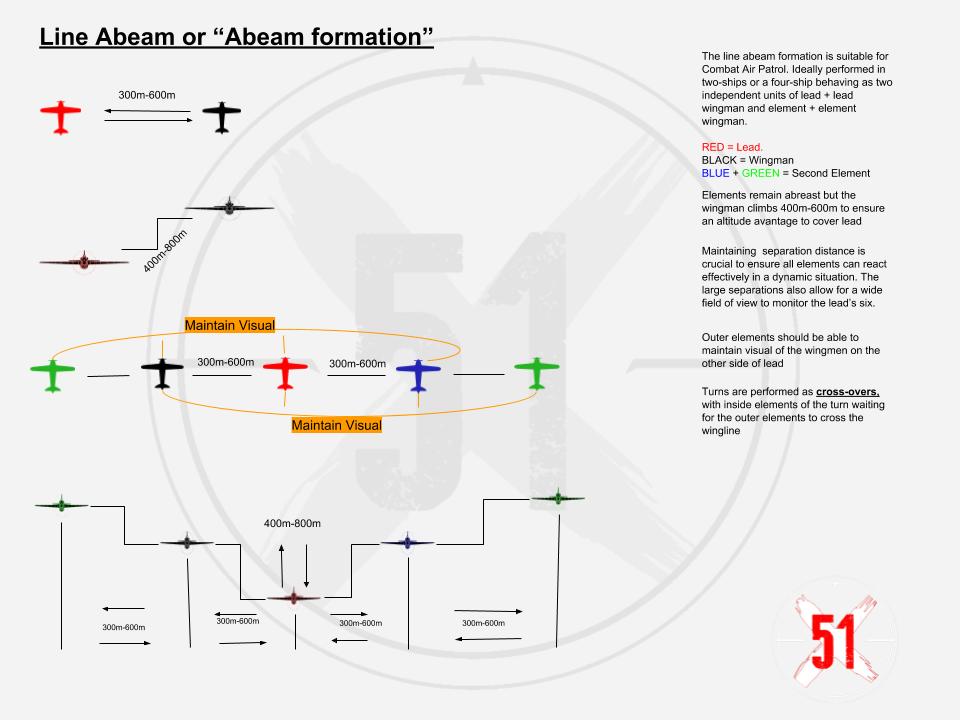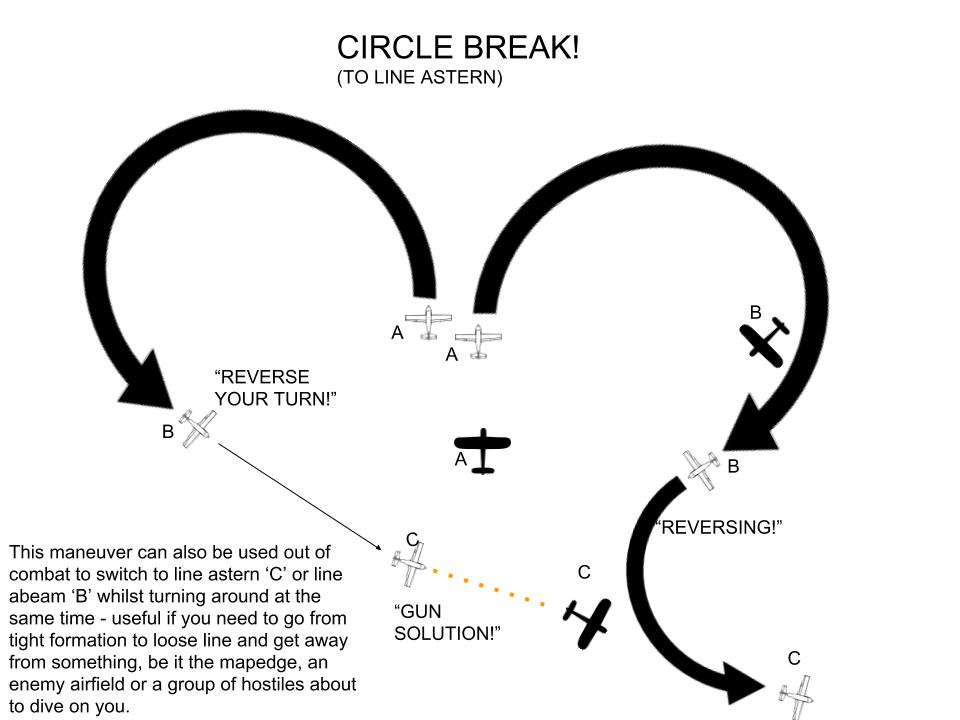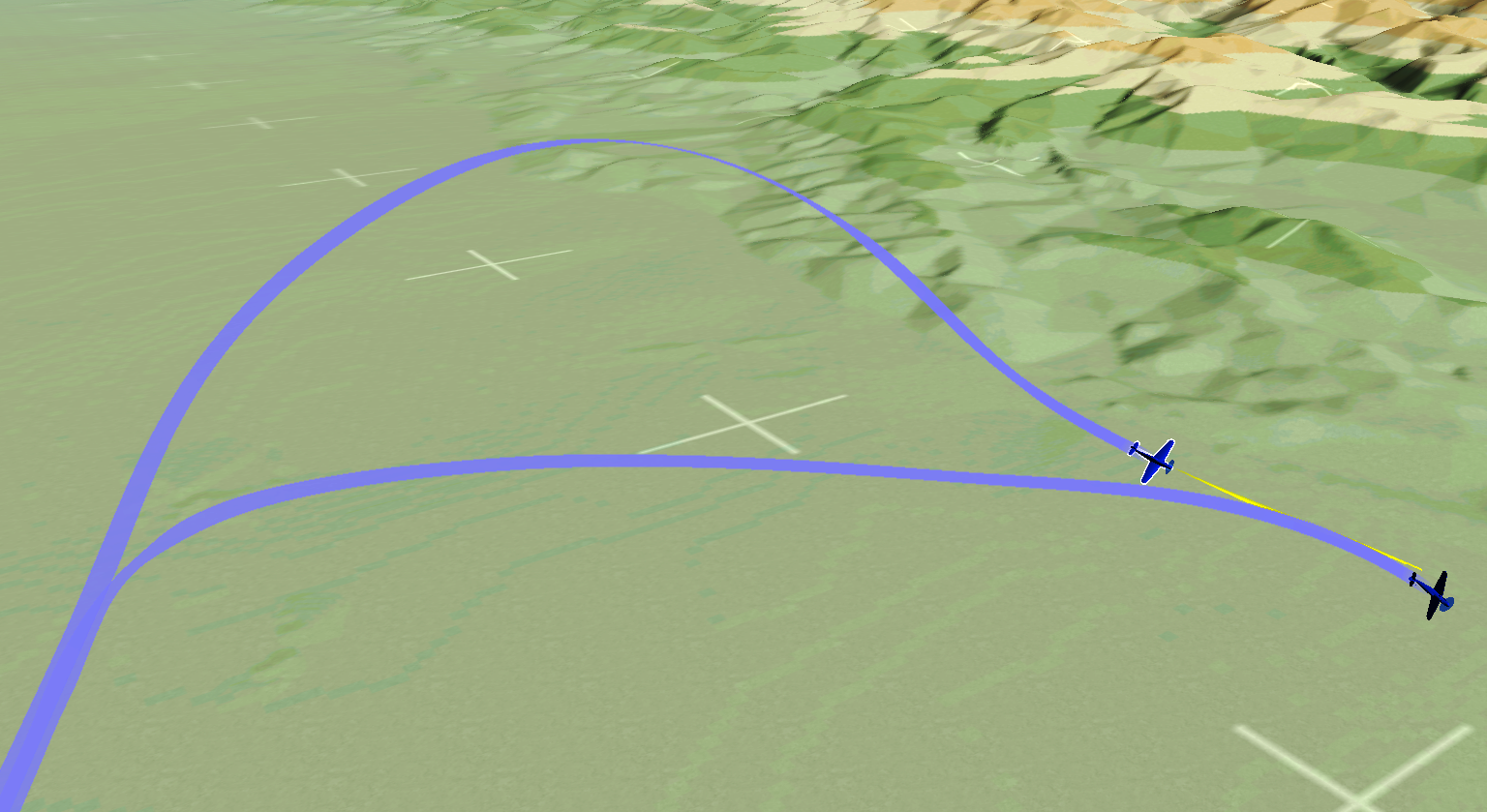Page still work in progress
Combat Formations
Combat Spread
Elements fly line abeam - wing tips aligned across the aircrafts' beams, with a spacing of between 300 and 600m. This allows maneuver such as the sandwich or bracket pincer to be performed, gives enough spacing for elements to react to surprise attacks and increases visibility of the flight's rear quadrant.

Tactical (Tac) Turn
This maneuver allows a flight to turn 90 degrees in either direction while maintaining formation and distances while in combat spread. The outside element initiates the turn, with the next furthers out beginning the turn just before the turning element crosses their tail. This continues from outside to inside element until all have turned. The formation positions have now been reversed, but the structure and distance is preserved.

Defensive Flight Maneuvers
Circle Break
With a far attacker on the defending element's six, the element performs a circle break, turning in opposite directions in a level turn, forcing the attacker to choose one defender to attack. The free defender can now maneuver onto the six of the attacker, often by calling the engaged defender to reverse their turn around 180 degrees through the break.
In a flight of 3 or more, one element can perform a split-S maneuver and perform the same break but in the vertical.

Defensive Split
In a two-ship of defenders being attacked from behind, the defenders can perform a break in which both elements turn in the same direction, but one defender extends slightly and climbs, while the other enters a shallow dive. If the attacker chooses the low defender, the high defender can perform a roll and dive onto the attacker, in what is essentially the last half of a high yo-yo. If the attacker chooses the high defender, the low defender can perform a barrel roll or the last half of a low yo-yo, while the high defender rolls into a dive, bringing the attacker down across the nose of the low defender.

